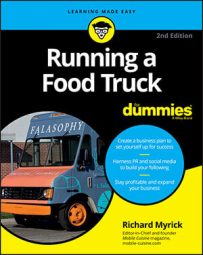Most of the trucks on the road today haven’t switched over to electric or biodiesel-driven engines and are still running on standard petroleum products. For those in that majority, attempting to cut fuel consumption can be a bit like dieting: Your success depends on setting an attainable goal, implementing a plan to reach your goal, and then making sure you stick to your plan. Improving your fuel consumption is a lot like challenging yourself to lose those extra 10 to 20 pounds; it requires you to stay disciplined and, in many cases, rework your everyday habits.
Although you have no control over tax rates or the actual fuel prices, here are a few steps you can take to help lower your overall fuel costs:
- Be sure to have regular maintenance completed. You’ll use less fuel if you keep your vehicle tuned up. Don’t forget about your vehicle’s wheel alignment, either; you can’t maximize your gas mileage if the truck isn’t driving straight.
- Improve your driving habits. An estimated 30 percent of fuel costs are determined by engine and truck speed, both of which are controlled by the driver. Continually revving and braking your food truck lowers your gas mileage. Try using the cruise control (if your vehicle has one installed) on the highway to help maintain a constant speed.
Don’t be a lead-foot driver. As a rule, each mile per hour above 55 reduces fuel efficiency by 0.1 mile per gallon. Not only will you save fuel and improve safety by driving more slowly, but you’ll also avoid having to pay the fines for those pesky speeding tickets. Remember: You’re not in a drag race; there’s no need for you to drive like a speed demon when you’re on the road.
- Keep an eye on your tires. Maintain the correct inflation pressure. Find out the proper tire pressure the manufacturer suggests and keep it there. When your tires are under-inflated, they’re less round and require more energy to begin moving and to maintain speed.
- Take the shortest route. This idea may sound obvious, but it doesn’t always happen. Go to an online mapping website and plan your route for the day. If you can, plan to avoid congested, high-traffic areas (in terms of vehicles, not foot traffic) that continually are filled with traffic snarls and stop-and-go driving.
- Get a good deal on fuel. Saving a penny or two per gallon really adds up. The GasBuddy app and website can assist you in shopping around for the best prices in your area. Another way to save is to read your owner’s manual to find out what octane level of fuel the manufacturer recommends for your vehicle. Don’t pay for premium (91 octane) if your truck only requires regular (87 octane).
- Use your air conditioning less. Many in the food truck industry live in warmer climates, but air conditioning makes the truck consume more fuel, so shut it off when you can and use your vents instead.

